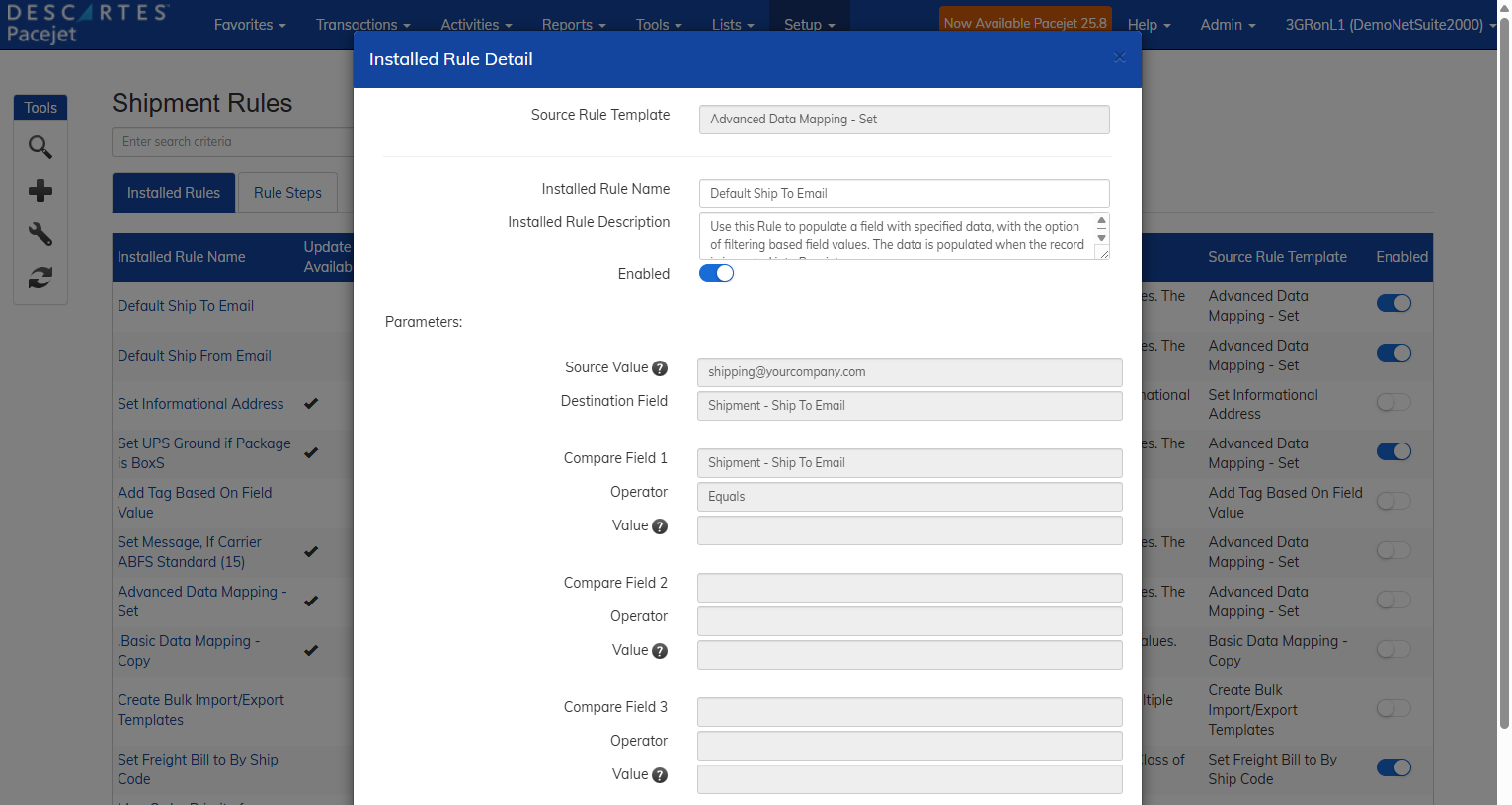Key Takeaways:
- UPS will reject international shipments without both email addresses starting November 1, 2025.
- Descartes Pacejet users can automate compliance using default email rules.
- These rules are easy to set up and adapt over time—no development work required.
- Staying compliant also helps reduce delays, returns, and support tickets.
Starting November 1, 2025, UPS will require both shipper and receiver email addresses for all international shipments processed via the UPS Ship API, with rejections for missing fields.
This update is more than a compliance mandate. It’s an opportunity for shippers to improve processes, avoid rejected shipments, and automate error-prone data entry.
If your enterprise resource planning (ERP) orders or customer records sometimes lack email addresses, you’re not alone. The good news?
Descartes Pacejet makes it easy to handle this change using business rules that automatically populate fallback email addresses when they’re missing.
The Problem with the New Requirement:
Without an email address, your international UPS shipments may fail to process—stopping your label generation and delaying orders.
You may have received a notification from UPS that looked something like this:

If your team ships from multiple locations, drop-ships, or fulfills orders with incomplete data, manual intervention becomes inevitable. This costs you time, causes frustration, and increases the risk of service level agreement (SLA) failures.
How to Solve It with Descartes Pacejet:
Descartes Pacejet’s business rules enable you to automatically populate default email addresses for either the “ship-from” or “ship-to” location when the information is missing.
For example:
- Default ship-from email: [email protected]
- Default ship-to email: [email protected]

You can apply these rules:
- Only for UPS international shipments
- By country (excluding DE, PL, CN per UPS’ exemption)
Or keep it simple and always populate a missing email address regardless of carrier or geography. The example below shows the correct fields to create this simple rule.
And you can do this all without writing code or opening a support ticket. Just use the built-in business rule templates in Descartes Pacejet to set your logic and go live.

- Source Rule Template is “Advance Data Mapping – Set.”
- Installed Rule Name is “Default Ship To Email.”
- Source Value is “[email protected].”
- Destination Field is “Shipment – Ship To Email.”
- Compare Field 1 is “Shipment -Ship To Email.”
- Operator is “Equals.”
- Value is blank, indicating that no email address was present.
Why This Matters:
The business rules give you quick adaptability to comply with new requirements, allowing you to:
- Avoid rejected shipments and delays
- Ensure compliance with zero manual effort
- Stay proactive in a fast-changing regulatory environment
And remember—this isn’t just about reacting to UPS. These types of carrier changes happen regularly.
With Descartes Pacejet, you’re building future-proof workflows that flex with your business, not against it.
What to Do Next:
- Check your ERP data to see if it always includes email addresses.
- Set default rules in Descartes Pacejet for ship-from and ship-to, if blank.
- Test the logic with sample shipments before November 1, 2025.
Need help setting up the rules? Contact us here or reach out to your Descartes support team.
